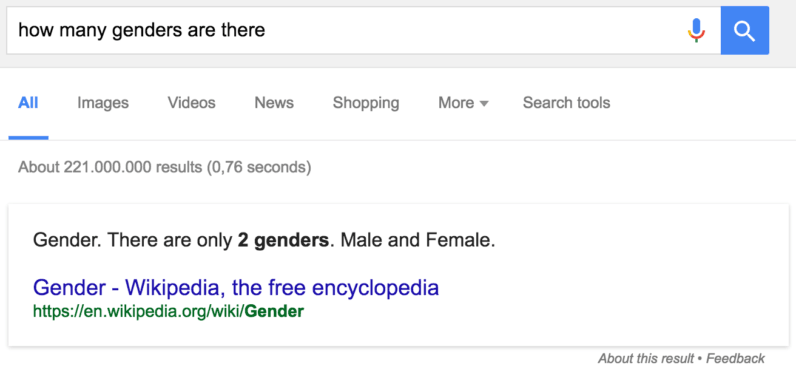
People around the world ask Google tons of questions, from the best place to spend their holiday to how to properly cut a mango.
For trivial, day-to-day questions it’s the perfect tool to get the information you need. With larger, more cerebral or deliberate questions, however, the search engine is expected relay the right information…. and there is definite room for improvement.
When asked the question “how many genders are there“, a block at the top of the search results appears saying there there are only two — male and female. We all know, however, that there are millions of people around the world that don’t identify being male or female – rather associating with one of many non-binary identities.

What happened here is an unfortunate effect of a Google search feature called Featured Snippets.
By aggregating information from high-ranking sources on the results page, it tries to give a summary of the answer the user is looking for. In this case, it picked a few words from the Wikipedia article on Gender to come up with a generic response.
However, the real problem here is that Google is shaping how we see the world around us.
If a user would click through to the original article, they would get the full story by Wikipedia editors on how different people feel about the subject. However, by putting the binary answer loud and clearly on top of the page, it’s too easy for people to just take that as the truth.
With more and more people around the world having instantaneous access to search engines and distributed knowledge — and relying on it more than ever — it’s extremely important to keep an eye on the information we’re spreading.
Get the TNW newsletter
Get the most important tech news in your inbox each week.




